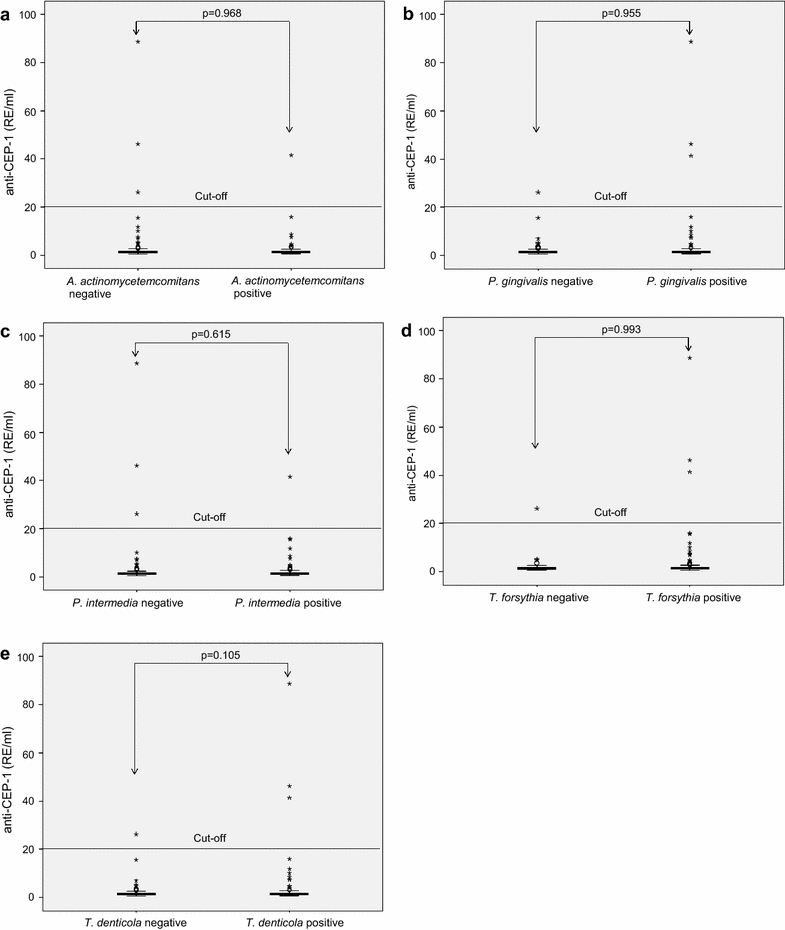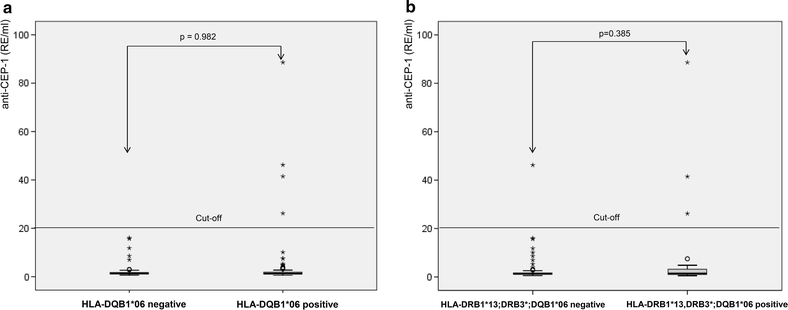Association of levels of antibodies against citrullinated cyclic peptides and citrullinated α-enolase in chronic and aggressive periodontitis as a risk factor of Rheumatoid arthritis: a case control study
- PMID: 26319714
- PMCID: PMC4552989
- DOI: 10.1186/s12967-015-0625-7
Association of levels of antibodies against citrullinated cyclic peptides and citrullinated α-enolase in chronic and aggressive periodontitis as a risk factor of Rheumatoid arthritis: a case control study
Abstract
Background: Periodontal disease could be a risk factor for rheumatoid arthritis (RA). It is assumed that the bacterial strain Porphyromonas gingivalis mediates citrullination of host peptides and thereby the generation of RA-associated autoantibodies in genetically predisposed individuals. For that reason non-RA individuals who suffered from generalized aggressive (GAgP, N = 51) and generalized chronic periodontitis (GChP, N = 50) were investigated regarding the occurrence of antibodies against citrullinated cyclic peptides (anti-CCP) and citrullinated α-enolase peptide-1 (anti-CEP-1) in comparison to non-RA non-periodontitis controls (N = 89). Furthermore, putative associations between infections with five periodontopathic bacteria or expression of certain human leucocyte antigens (HLA) to these autoantibodies were investigated.
Methods: The presence of anti-CCP and anti-CEP-1 in plasma samples was conducted with enzyme linked immunosorbent assay. Subgingival plaque specimens were taken from the deepest pocket of each quadrant and pooled. For detection of DNA of five periodontopathic bacteria PCR with sequence specific oligonucleotides was carried out. Low resolution HLA typing was carried out with PCR with sequence specific primers. Differences between patients and controls were assessed using Chi square test with Yates correction or Fisher`s exact test if the expected number n in one group was <5.
Results: Two patients with GAgP (3.9%), no patient with GChP and two controls (2.2%, pFisher = 0.662) were positive for anti-CEP-1 whereas no study participant was anti-CCP positive. Individuals with P. gingivalis were slightly more often anti-CEP-1 positive in comparison to individuals without P. gingivalis (3.2 vs. 1.1%, pFisher = 0.366). Carrier of HLA-DQB1*06 or the HLA combination DRB1*13; DRB3*; DQB1*06 were slightly more anti-CEP-1 positive (6.1 and 4.3%) than no carriers (0.7 and 0%, pFisher 0.053).
Conclusions: GAgP and GChP and the presence of periodontopathic bacteria are not associated with an increased risk for occurrence of anti-CCP and anti-CEP-1 autoantibodies. The putative relationship between periodontitis and RA should be investigated in further studies.
Figures



References
-
- Smolik I, Robinson D, El-Gabalawy HS. Periodontitis and rheumatoid arthritis: epidemiologic, clinical, and immunologic associations. Compend Contin Educ Dent. 2009;30:188–190. - PubMed
Publication types
MeSH terms
Substances
LinkOut - more resources
Full Text Sources
Other Literature Sources
Medical
Research Materials

